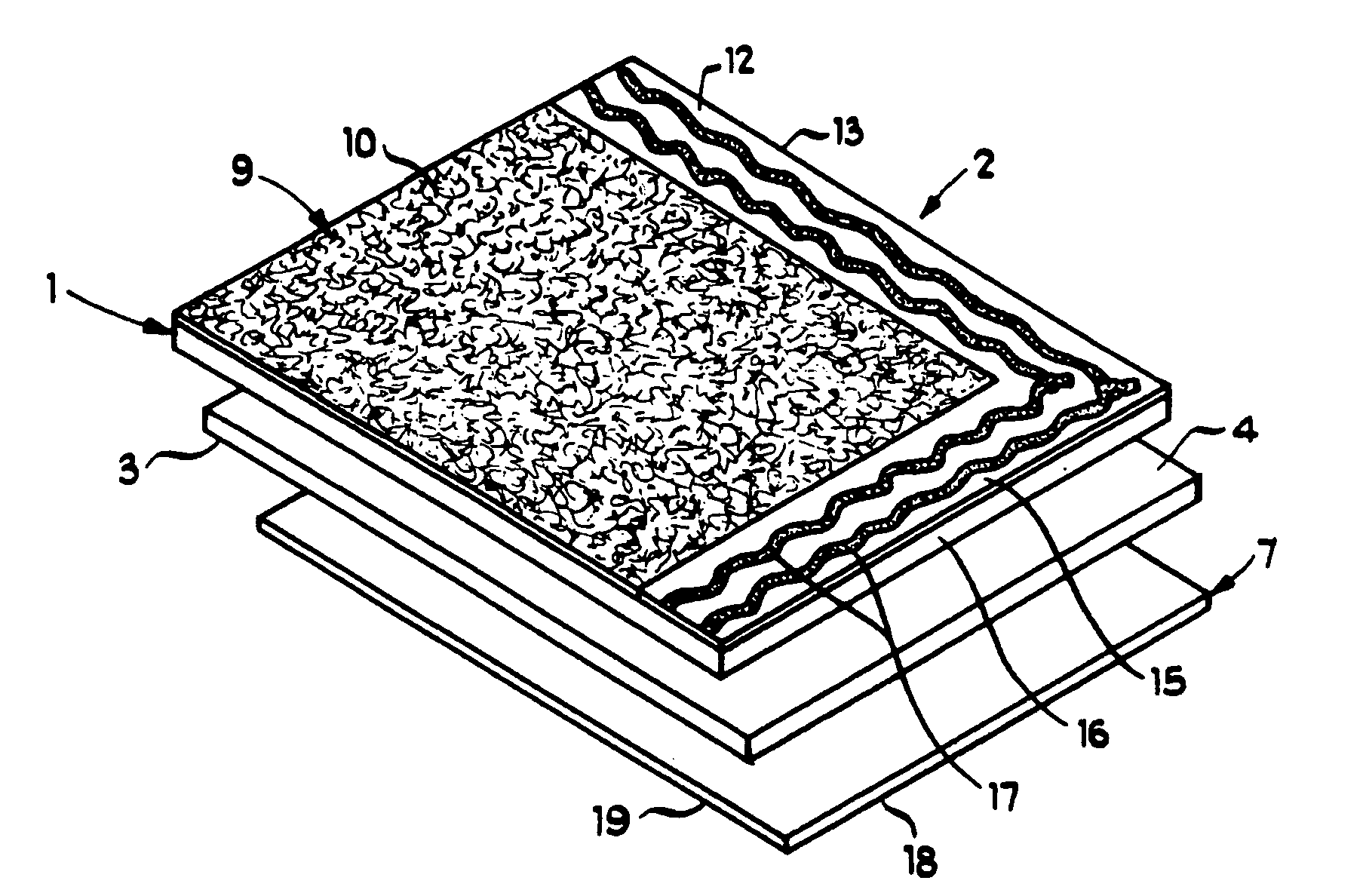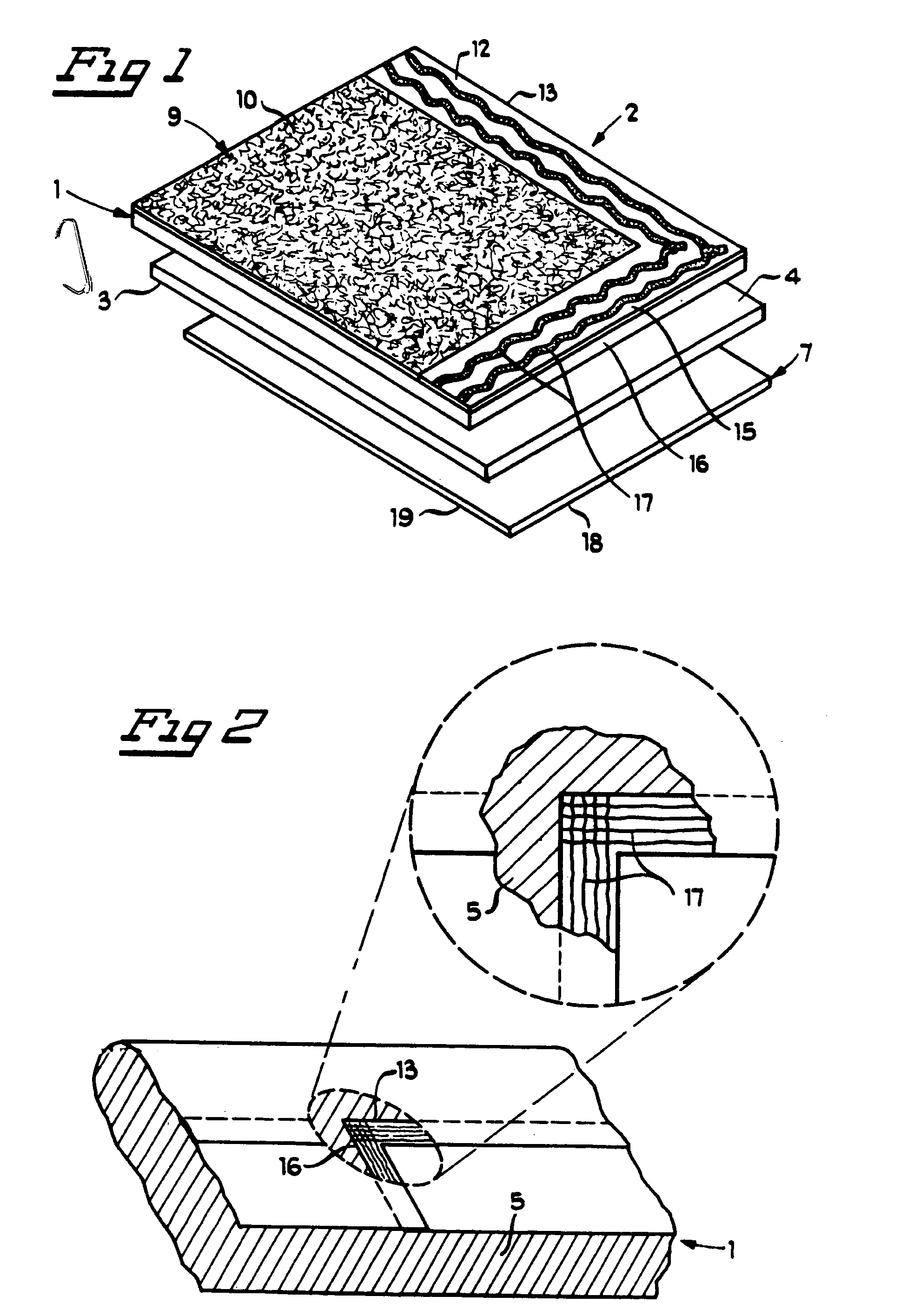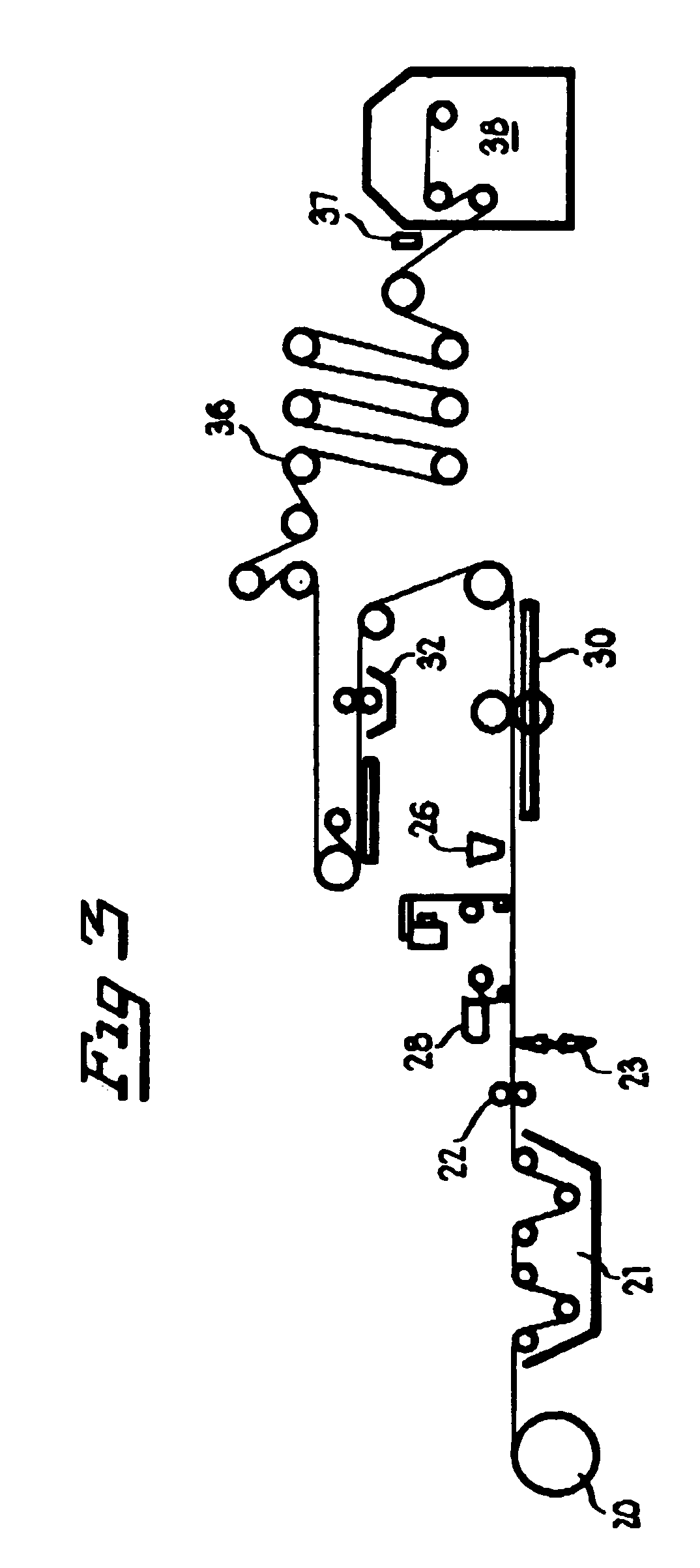Some underlayments such as
asbestos fiber roofing felts were used during the early part of the 20th century but are no longer used due to health hazards associated with
asbestos fibers.
Roofing felts have been in short supply periodically and due to supply-demand factors, the price of felt has continued to rise over the years.
Because of such thermal
cycling, felts experience shrinkage when exposed to the elements and exhibit deterioration in a relatively short period of time.
Moreover felts are not watertight when roofing nails or staples are driven through them, making it necessary to cover the felt underlayment with the next course of roofing material immediately upon installation of the felt to the
deck.
These limitations, coupled with frequent shortage of felt underlayments, have forced roofers and contractors to search for alternate materials.
However, there are a few products in the
market place that have
no carrier such that these consist of simply a
coating of self-adhesive compound on a polyolefinic film.
Also granular surfaced products, whether APP or SBS based, are not recommended since the mineral surface can cause abrasion of the
metal.
This poses severe problems for the installer of such roofing underlayments in that these products are generally modified with
styrene-butadiene-
styrene (SBS) compound, which is soft and flows at temperatures above 110 degrees Celsius.
This poses several problems for the installer of the roof in that underlayments are generally thin (less than 2 mm in thickness), smooth surfaced, modified with SBS compound which is soft, and are reinforced with a fiberglass sheet that imparts very poor
tear resistance properties to the membrane.
Obviously this poses a great risk to people working on the roof and in the vicinity of the same, in addition to damage caused to the underlayment material, and lost installation time.
Base sheets, cap sheets and underlayments are applied to the underlying surface using a variety of methods such as using mechanical fasteners, which is a slow and cumbersome process.
It is obvious that torching is dangerous considering the risk of fire caused by the utilization of a
torch and other similar equipment.
Hot-mopping application, which requires a fair amount of labor, especially in larger projects, also results in waste cartons with
chemical residue.
These dirty cartons must be disposed of properly, for example, in landfills, and may become unsafe for the environment.
In addition, disposal of the waste materials become costly and labor-intensive.
Whereas this method eliminates the aforementioned problems associated with disposal of cartons, etc., it poses other problems in that it is very difficult and dangerous to pump hot
asphalt to the roof level, especially in the case of high-rise buildings.
Use of cold adhesive poses its own problems related to disposal of empty buckets or
aerosol cans.
Additionally, cold adhesives contain solvents that are not desirable from an environmental point of view.
Moreoever, there is a potential for the release of airborne pollutants with this
system of application.
Furthermore, the end result of the above-described in field applications is also not successful each and every time.
However, these products are based on application methods that
pose environmental and operational hazards during the application of the roofing membrane.
This poses several problems for the installer of the roof in that underlayments are generally thin (less than 2 mm in thickness), smooth surfaced, modified with filler alone or with an SBS compound which is soft, and are reinforced with a fiberglass sheet that imparts very poor
tear resistance properties to the membrane.
Obviously this poses a great risk to people working on the roof and in the vicinity of the same, in addition to damage caused to the underlayment material, and lost installation time.
Such membranes are ideal for regions where SBS based membranes (
torch, mop, cold applied or self-adhered) are unsuitable due to high temperature conditions, and APP torch membranes are undesirable due to legislative restrictions on use of torch or prohibitive insurance costs.
However, SBS compounds become softer when heated to relatively lower temperatures than other compounds, and can cause the SBS compounds to flow.
When roofing tiles begin to move, they first “sink” into the soft SBS compound used in most existing underlayments, causing damage to the fiberglass reinforcement.
The
softening of SBS compounds at lower temperatures can result in the tiles sliding downward, particularly on steeper sloped roofs.
Similarly, self-adhesive compounds have “very poor”
weathering characteristics, thereby undergoing premature degradation with
exposure to the elements.
If the top surface is too smooth, it may not provide the necessary skid resistance for the installer of the product.
Non-woven fabrics have low strength, and as such may be unable to
resist movement of tiles on rooftops.
 Login to View More
Login to View More 


